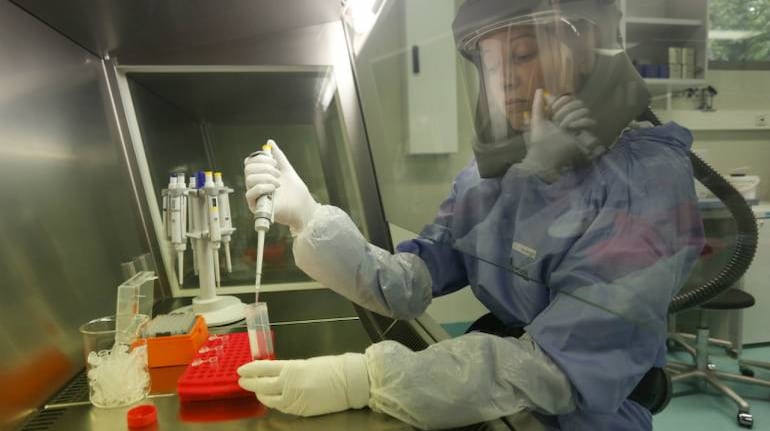



The novel coronavirus, officially named SARS-CoV-2, which was first reported from Wuhan in China in December 2019, has mutated into 10 different types, of which one A2a has become dominant and spread across geographical regions, The Times of India has reported.
The newspaper has cited a study conducted by Nidhan Biswas and Partha Majumdar from the National Institute of Biomedical Genomics in West Bengal. The study is going to be published in the Indian Journal of Medical Research, which is a medical journal published by ICMR (Indian Council of Medical Research).
According to the study, the A2a mutation of the novel coronavirus is highly efficient in entering human lung cells in large numbers. The previous SARS-CoV, which had emerged in 2010 and infected over 8,000 and killed 800, was also efficient in attacking human lung cells, but it was not as adept as A2a.
Besides, A2a is efficient in transmission, and consequently, it has spread rapidly across the globe, the authors pointed out in their study.
Catch all LIVE updates on the coronavirus pandemic here
The ten different mutations evolved from the ancestral ‘O’ type in a span of four months. By March-end, the A2a overtook the other types across the world, and became the dominant type of SARS-CoV-2.
The conclusions from the study are important as they will provide those conducting research on prospective vaccines with a specific target.
For the study, Biswas and Majumdar used RNA sequences of 3,600 coronaviruses collected from 55 countries from December 2019 to April 6, 2020.
Read Also: Wuhan's L-strain may be behind Gujarat's high death rate
The initial observations pointed out that the coronavirus has evolved into newer types – O, A2, A2a, A3, B, B1, and so on – during its spread from Wuhan to the rest of China and other parts of the world. Currently, there are 11 types, including the ancestral ‘O’, which originated in Wuhan.
“To live, a virus must propagate by infecting other animals. A mutation usually disables the virus from transmitting itself. However, some mutations help a virus from transmitting more effectively and infect more persons. Such mutant viruses sometimes completely replace te original type of virus. The SARS-CoV-2 is doing just that,” Majumdar said.
COVID-19 has emerged as a pandemic because of A2a type’s ability to transmit easily Majumdar added.
Of the RNA sequences collected from infected persons in India, 47.5 percent showed A2a mutation of coronavirus. Interestingly, most people with A2a type did not have foreign travel history. However, for conclusive research on dominance of A2a type in India, more RNA sequences will be required, the researchers said.
Discover the latest Business News, Sensex, and Nifty updates. Obtain Personal Finance insights, tax queries, and expert opinions on Moneycontrol or download the Moneycontrol App to stay updated!
Find the best of Al News in one place, specially curated for you every weekend.
Stay on top of the latest tech trends and biggest startup news.